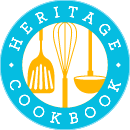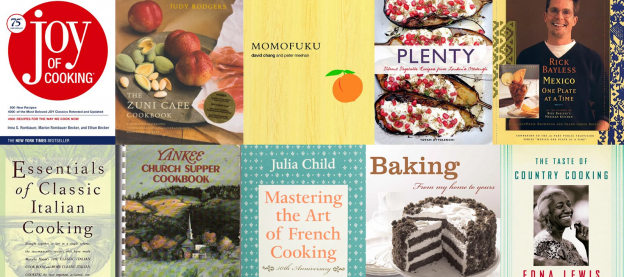Where do great recipe book ideas come from? Celebrity chefs seem to pull ideas out of thin air and cook up a storm with ease. Amateur chefs may at times feel uninspired or as if they’re running dry for recipe ideas, which is more discouraging if they’re making a recipe book. However, culinary creativity doesn’t have to feel so painful. We’ll highlight the methods great chefs use to create scrumptious meals, along with practical sources of inspiration for beginners.
Recipe Book Ideas Straight from the Chef’s Mouth
First off, we’re going to tell you what a cook or chef will tell you themselves – there is no single method to create a new recipe. The world’s great culinary masterminds themselves will admit that they look everywhere for ideas. They may pull ideas from their cultural backgrounds, travel experiences, childhood memories, acquired knowledge and much more.
A Shortlist of Cooks’ and Chefs’ Recipe Inspirations
- Ina Garten – Ina Garten, American author and host of Food Network series, Barefoot Contessa, says that she finds ideas for recipes “everywhere”. She has cited dinner parties, cookbooks and grocery stores as frequent sources of inspiration, referring to the them to keep a “running list of things” she likes to make.
- Wes Lieberher – An American executive chef by day and a rock star by night, Wesley Lieberher first thinks about foods he loves or grew up with. He then considers how he can make them different, make it unique to him and how he can modify the ingredients of the dish.
- Hayden Quinn – Mr. Quinn, who has appeared on MasterChef Australia pulls inspiration from research, travels, cookbooks, dining out at different restaurants, and watching food shows.
- Donna Hay – The Australian food stylist, author and magazine editor is renowned for the simplicity of her recipes. In the past, Donna has stated that she collaborates with her team and as a collective, present ideas they’ve seen in their experiences or travels. She has also mentioned that she tweaks existing recipes that are already in her repertoire.
- Michael Colameco – A veteran chef, author and personality, Michael Colameco ventures out to restaurants that have great ratings and reviews, to eat for pleasure and research. Doing so fills his palette with new recipe ideas he can replicate and then adapt. He acknowledges that most modern recipes are “compilations” of existing ones.
- Devin Alexander – Devin Alexander, who has appeared on The Today Show and The Biggest Loser, admits that she will read every word on a menu to internalize the makings of great recipes. She also goes to restaurants to order what she wants to see – not just what she would like to eat. She then makes mental notes on how she can make alterations on exotic dishes to fit her needs or vision. Devin also pulls ideas from food shows on T.V., parties and events where food can be sampled.
- Tim Maddams – The UK-based chef and TV personality says that great recipe book ideas are all about development. Fittingly, he starts with a dish he’s cooked before anything else. He may then add a garnish he saw on another dish, which often leads to other ingredient ideas popping up his brain for experimentation. Tim admits that these experiments do fail, but they improve as you practice over time. He also emphasizes the importance of networking with other cooks and chefs, eating at their restaurants and even speaking to others online to exchange ideas.
In the culinary book, “Kitchen Creativity: Unlocking Genius – with Wisdom, Inspiration, and Ideas from the World’s Most Creative Chefs”, written by Karen Page, she refers to the three-step process of mastery, alchemy, and creativity. We’ll abbreviate that to MAC. Essentially, MAC goes like this:
- Mastery – Cook a meal many times without trying to invent anything at first. You will learn the basics in terms of preparation, ingredient use, cooking methods and more.
- Alchemy – During this stage, you will become more attuned to the science behind a dish. You will know why it tastes better with or without certain ingredients or how altering cook temperature affects its texture.
- Creativity – Once a dish becomes second-nature, you will have a mental archive of tricks that you can use to alter a dish without sacrificing its essence.
Karen’s model is no different than how a musician, writer or painter becomes a genius. They first imitate the greats, then they innovate by adding their own touches, and finally, they emerge with a completely new style – an invention.
With that said, let’s break down a few methods you can try when making your own recipe book.
Change the Cooking Method, Keep the Dish
When your well of inspiration runs dry, you might simply need to switch up your cooking method instead of looking for new ingredients. Food magazine, Bon Appetit, exemplified this with their Every Way to Cook/Make video series. They display 59 ways to make eggs (video below), 43 ways to cook steak and 63 ways to make potatoes.
You have a barrage of cooking methods at your fingertips: baking, poaching, grilling, pan-frying, pan-searing, broiling, sauteing, simmering and more. Experimenting with varying cooking styles can alter or elevate the sensory appeal run-of-the-mill dish. You can, in effect, create a new recipe without changing a single ingredient!
Trading Places…With Ingredients
Eat the same thing long enough and you’ll get “taste blind”, a sad condition where you no longer appreciate a tasty, aromatic dish. Does that sound familiar? Using the same ingredients over and over again can do that, and you might eventually dislike an otherwise delicious recipe.
A simple fix for such redundancy is to swap out the usual ingredients for substitutes. For example, you can substitute:
- Spinach for kale
- Ground turkey for ground beef
- Cauliflower for bread
- Honey for sugar
- Red wine for beef broth
These are just a few ideas you can start with. Make sure to start slow and pace yourself here: begin by swapping out just one ingredient at first. Follow up with a taste test. If it passes, you can think of other ingredients to swap out. It’s just a matter of rinsing and repeating until you arrive at a new version of the original recipe.
Another technique for adapting your ingredients is to take your favourite comfort foods and “adapt” them. You can turn a comfort food that may not be quite healthy and turn it into a hearty dish that’s tasty and nutritious. Or, you could change the form of a comfort food favourite to add variety. Even simply adding a new spice or sauce to an existing comfort food can make it more enjoyable.
Some examples include:
- Butternut Squash Macaroni & Cheese
- Hamburger Soup
- Chocolate Chip & Walnut Cookie – Ice Cream Sandwiches
Simply look at your pantry for the items you make comfort foods with, and how you can add a twist – without ruining their taste of course! You might surprise yourself with what you create.
Blending Tastes From Around the Globe
Should you eat Mexican tonight? Or what about Italian? Or Japanese? Sometimes you’d like to have them all but when everyone around you is rolling their eyes at your indecisiveness, you might give in to peer pressure.
Fusion cuisines can fix that; they can even open you up to new recipe ideas altogether.
Fusion cuisine is defined as the “marriage of one or more cooking traditions, techniques or disciplines to form an altogether different approach or finished dish”. That means you can make a dish that incorporates American stylings with Caribbean ingredients, or French cuisine with Spanish cuisine. The options and possibilities are endless.
Examples of Successful Culinary Fusions
- Creamy Chorizo & Tortellini Soup – A blend of Mexican and Italian cuisine.
- Swedish-Norwegian Pancakes – A blend of Swedish and Norwegian cuisine.
- Za’atar Roasted Tomato Crostini With Labneh – A blend of Middle Eastern and Italian cuisine.
- Indian-Style Arancini – A blend of Indian and Italian cuisine.
- Miso-Stewed Short Rib French Dip Sandwich – A blend of French and Japanese cuisine.
- Sizzling Shrimp Fajita Stir-Fry – A blend of Mexican and various Asian cuisines.
- Healthy Black Bean Jalapeño Popper Egg Rolls – A blend of Greek and various Asian cuisines.
Going back to our MAC model mentioned before, it’s vital that you learn how to cook each meal separately before fusing them. Failing to get the essentials of individual cuisines right will likely turn out disastrous when you combine them.
Get Recipe Book Ideas From Food Science
Have you ever heard of edible science?
It’s exactly as it sounds – science experiments you can eat. It’s a popular activity for kids since they can turn things like slime and dough into tasty treats. The practice can be useful for serious cooks and chefs as well. In the culinary world, we’d liken this to food science, which is essentially the study of the nature of foods, food safety and processing and deterioration.
We’ll spare you from the culinary mambo jumbo, but you can try a kitchen experiment to alter the texture, taste and shape of popular foods to give them exciting new twists. It can be a great culinary tactic especially for the creation of desserts.
Examples of edible science foods you can make are:
- Glow-in-the-dark Jello
- Rock candy
- Fizzy lemonade (without a fizz machine like Sodastream)
Food experiments can do double duty for you and your kids. First, they can introduce new characteristics to the foods you already like and make them seem more enjoyable. Second, they’re fun to make, and they’re a great way to get your kids involved in the kitchen.
Recipe Book Ideas Can Be Found Anywhere & Everywhere
Great culinary ideas don’t come from a vacuum. At the opening section, we mentioned a few high-profile chefs who detailed where their ideas come from – many of them build off existing recipes and concepts. Be like them. Instead of stressing out about originality, look at how other master chefs and cooks create their meals and pull inspiration from their works.
You will slowly build a “culinary vocabulary” of sorts, which you can draw from when creating your own dishes. As you embark on your journey of making a recipe book, always keep in mind the words of this often misattributed quote: “Nothing is completely original.”
Need help and inspiration to make your own recipe book? Take a look at our resources page for recipe ideas and tips on how to make a cookbook.







